Is it possible to practice minimalism with kids? As a mum of two little ones, I certainly think so! This guide will help you take the first steps towards simplifying family life.
When I started this blog in 2015, my life was pretty different. I was living in a 140 square foot studio apartment, and everything I owned fit easily in the back of my tiny car.
I had less stuff back then and also fewer responsibilities. In fact, I was actually about to head off on a seven month, round-the-world honeymoon—a trip made possible only because of my minimalist lifestyle.
As a recovering shopaholic and workaholic, minimalism didn’t come naturally to me. Still, looking back, it was obviously easier to live simply back then because I only had myself to think about.
Fast forward to 2017. I was pregnant, and like many first time parents, I spent a lot of time thinking about how my life was going to change.
One of many questions weighing on my mind was about my simple lifestyle.
“Is it really possible to live minimally with a family?” I wondered.
Three more years have passed and I’ve since added another child to the mix, and I finally feel ready to answer this question. If you’re wondering is minimalism with kids possible and if so, what does it look like, then this post is for you.
I’m sharing a behind the scenes look at my life, as well as tips to help you simplify with your family too.
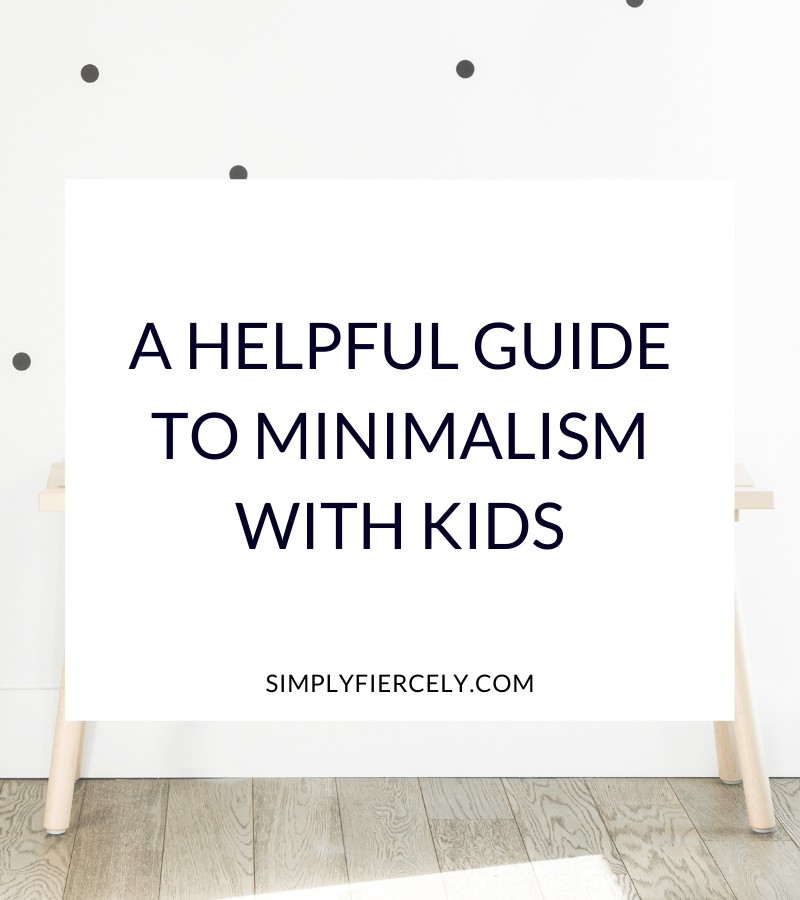
This post contains affiliate links, which means I recommend products and make a small commission on purchases at no additional cost to you. Click here for the full disclosure statement.
Can You Be a Minimalist With Kids?
Before we get into the details, I want to clarify a few things.
I am not an “extreme” minimalist. Yes, I’ve dabbled in it (I travelled with carry-on only when I went on my seven-month honeymoon) but it’s not for me in the long-term—and honestly, how much I own doesn’t matter to me.
I don’t believe minimalism is a competition to see who can live with the least stuff. Instead, it’s about intentionality. Do the things I own, buy, say, and do reflect the type of life I want to live?
If so, then my life is clutter-free, whether it looks like it to anyone else or not.
I’m telling you this to make sure our expectations are on the same page. Yes, I think you can be a minimalist with kids, but practically speaking, that’s going to look different for different people.
My kids have toys and books, so if that’s not “minimalist enough” for you, then that’s OK. But this post (and this blog) might not be very helpful for you.
Instead, I present you with real-life simplicity. As a family, we have just “enough” to be happy in our small (but not tiny) 660 square foot apartment. We use “stuff” when it adds value to our life—nothing more and nothing less.
Related Post: What Is Minimalism + Why Is Everyone Talking About It
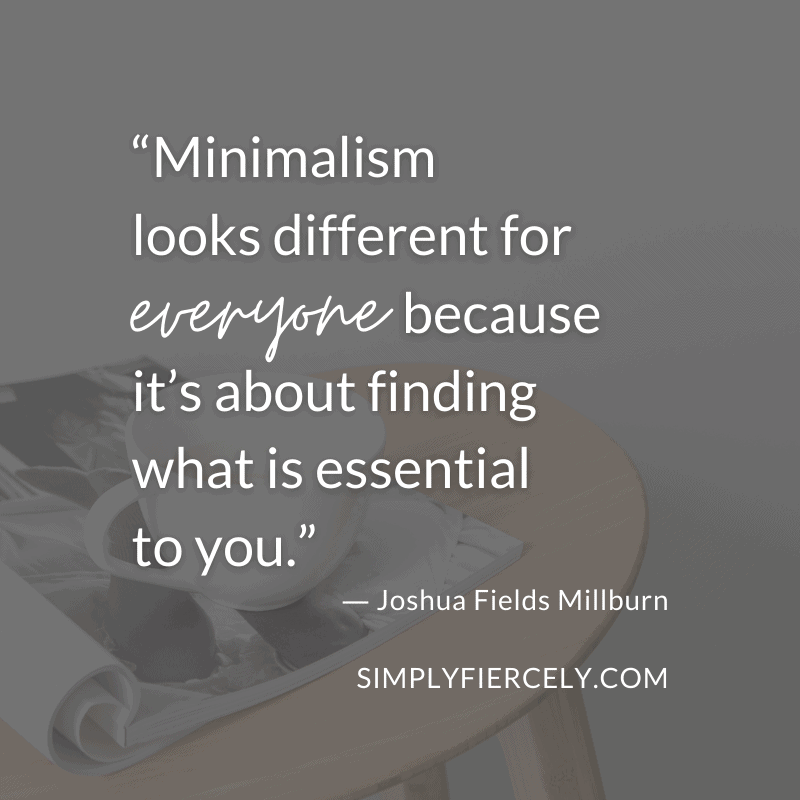
How Do You Simplify Family Life?
Here’s the not-so-surprising secret to simplifying family life: do what works best for you and your family.
If there’s one thing that motherhood has taught me, it’s that there’s no “one right way” to do anything involving children. Instead, you need to be flexible.
Every child is different, and yours might not respond well to the exact version of minimalism in your mind. That’s OK—that doesn’t mean it won’t work. You just need to pivot and try something else.
So with that said, if something appeals to you, then give it a try! But if you don’t think it will work for your family then skip it and move on to something else.
Ultimately, living simply (with or without kids) is about small, repeated decisions. Don’t worry if you don’t have time to declutter your entire house this weekend. Just do one thing, and then another, and before you know it, you’ll feel like a minimalist parent!
Add to Your Reading List: Simplicity Parenting: Using the Extraordinary Power of Less to Raise Calmer, Happier, and More Secure Kids
BUILD MINIMALIST WARDROBES FOR EVERYONE
Creating capsule or minimalist wardrobes for everyone in the family, including the kids, can make life so much simpler! Or at a minimum, there’s less laundry to do and who doesn’t want to spend less time cleaning?
In full disclosure, I will admit that I bought way too many clothes when my daughter was born. She was my first baby and I got a bit carried away—but this time around I know better.
My son has a super simple capsule wardrobe, as you can see from the photo below. A few things are in the wash but all of his clothes live in this small basket. (And honestly, this is too much. Baby clothes are so little that this is actually more than he needs!)
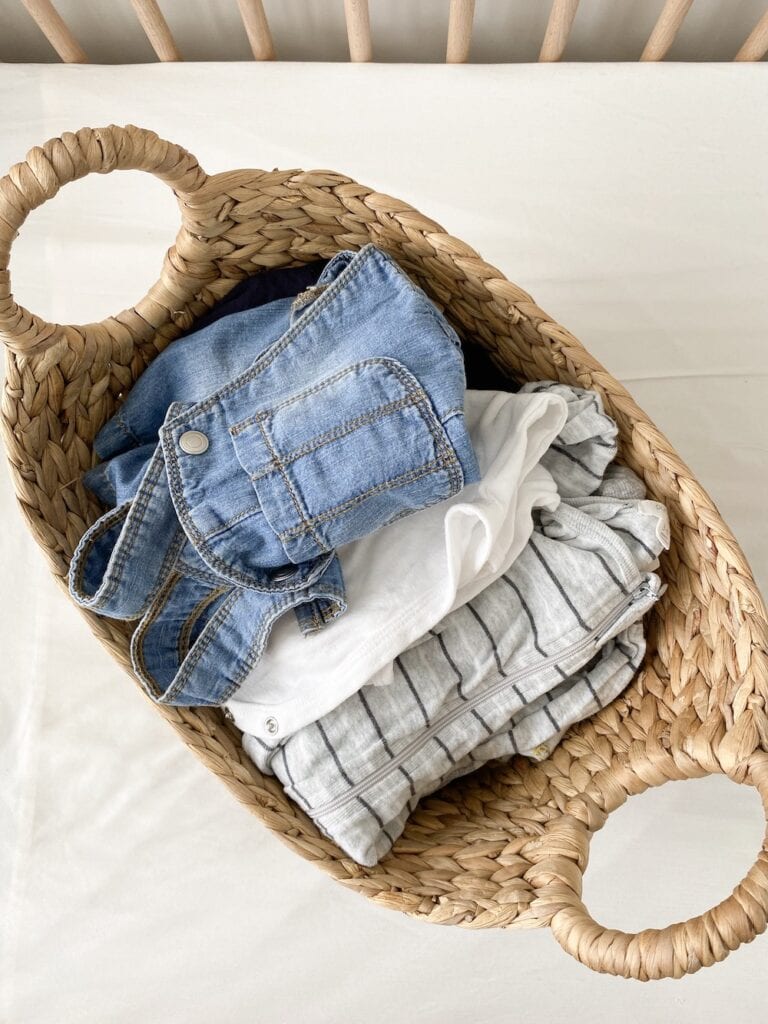
Tip: Not sure how much is “enough” for your family? Think about your laundry habits. If you do frequent loads, you’ll need less than someone who plans to do laundry once a week.
Curious what an adult minimalist wardrobe looks like? Check out my closet tour for an inside look.
DECIDE HOW TO HANDLE GIFTS
A lot of parents tell me they struggle when birthdays and holidays roll around. They’re not sure how many gifts to give their children or how to handle gifts from other people.
There are many strategies that you can use to manage gifts as a minimalist family and here are a few ideas. You can pick and choose which to use, but I recommend communicating your wishes to your loved ones ahead of time, to avoid hurt feelings.
- Use gift categories, such as something to wear, something to read, something to do, etc. Decide how many items you’re going to choose from each category or you could even assign different categories to different family members.
- Create traditions that don’t revolve around gift-giving. You can still make gifts part of your celebration but make it a small part of the day instead of the highlight.
- Choose one large “experience” gift, like an annual membership to the zoo and ask family members to contribute to the expense.
One tip to help get children excited about experiences is to include a small consumable gift that can be used right away. For example, colouring sheets about the zoo will help build excitement without creating clutter because they can be recycled later.
EVERYTHING HAS A PLACE
This is a rule that everyone can benefit from but I find it’s especially helpful for children.
Every single toy, book, game, etc. should have a specific place in your home. Be consistent about putting things back in the same place and your children will (hopefully) learn from you.
Your house will stay cleaner and your kids will be able to find their toys with ease. You’ll also be more aware of what you own, which in turn, makes you less likely to buy things you don’t need.
On a personal note, I want to mention that this worked incredibly well with my daughter. I always knew it would make my life easier, but I’d heard so many horror stories about kids and toys that I just assumed she’d be messy no matter what.
But surprisingly, around the age of two, she started cleaning up after herself, even without me asking. She just likes seeing things in their proper place.
Now, of course, I can’t promise the same will happen with your kids, but I think it’s definitely worth giving it a shot.
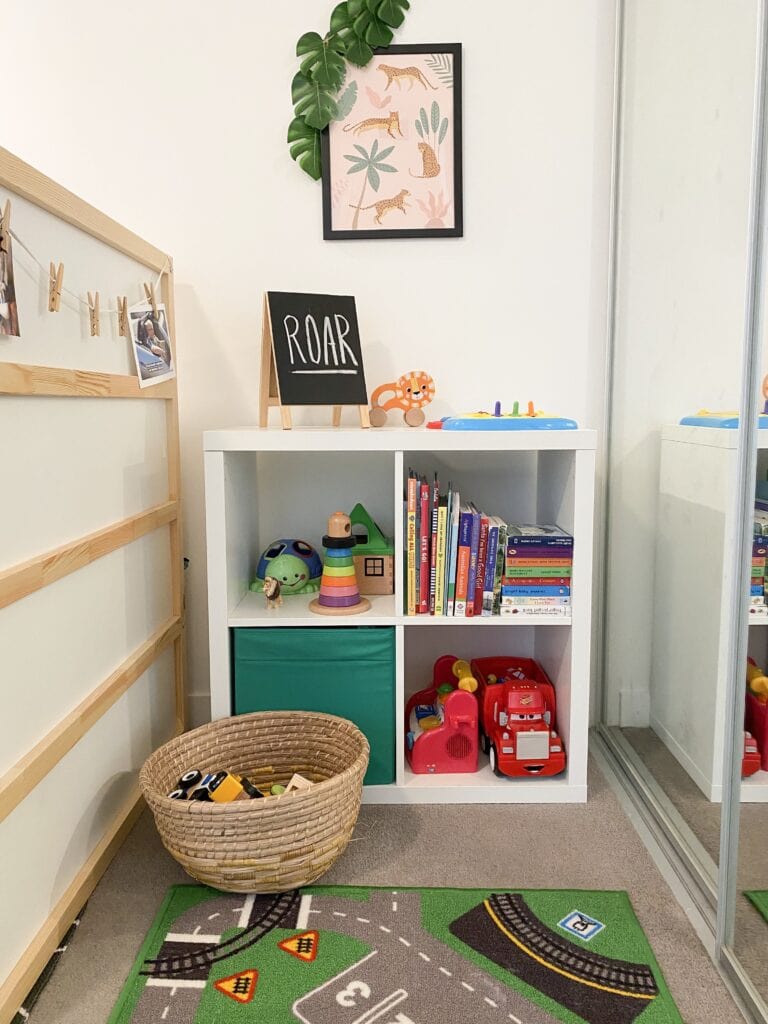
FOCUS ON EXPERIENCES OVER “STUFF”
Minimalism is less about decluttering and more about making room for life. One great way to do this is to value memorable experiences over buying more toys or games.
I should mention that I’m sure most people “know” this in theory, but sometimes find this hard to put into action. I definitely struggle with this myself now that my daughter is older.
For example, whenever I notice she has an interest in something new, my first instinct is to buy something to support that interest. (Ooh—she likes pirates now! What pirate “stuff” can I buy for her?)
We all want to encourage our children, but when I have these thoughts, I challenge myself to think outside the box. How else can I support these interests, without buying anything new?
Can we go to a new playground with a pirate ship? Make pirate eye-patches out of the recycling? Or borrow stories about pirates from the library?
Of course, it’s about finding balance. I believe that toys can add value to our little one’s lives but giving in to the urge to buy new things all the time can stifle their creativity. Try not to act on impulse and instead, see what they come up with on their own.
Then when you do buy toys, try and choose ones that encourage imaginative play. This way, their toys become part of the memory-making experience.
ROTATE THROUGH TOYS + CRAFTS
A lot of people feel the urge to buy new toys or activities because they think their kids are bored with what they already have.
I know this is hard for a lot of people, especially this year when so many can’t go out and do things like usual. But before you click “add to cart” on something new, why not give a toy rotation a try.
It doesn’t have to be complicated. Just have a look around where your kids keep their toys. Gather up things they’re not currently playing with and store them out of sight.
Next, rearrange what’s left so they can actually see their toys. If you’re feeling especially motivated, try creating an “invitation to play” out of what’s left by grouping similar toys and leaving them somewhere highly visible.
Don’t point this out to your kids. Instead, wait and let them discover it for themselves. In my experience, this creates a renewed interest in old toys and helps them feel happier with what they already have.
Then when the shiny, “new” feeling wears off, simply rotate which toys are displayed. It keeps play areas from feeling cluttered and it also helps you identify toys that need letting go.
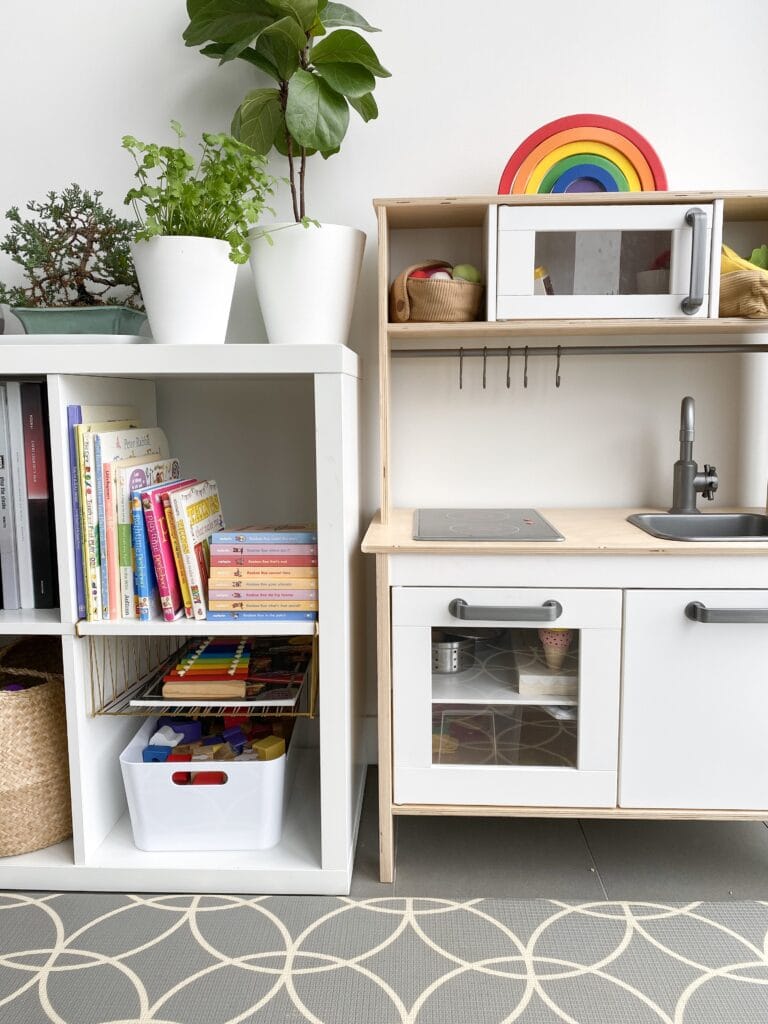
Related Post: 7 Secrets For A Decluttered Home (That Might Surprise You!)
DECLUTTER TOYS + CLOTHES REGULARLY
Which brings us to my next tip, which of course, is decluttering. If you want to be a minimalist family, you need to let go of the “stuff” that clutters your home and minds.
Of course, your next question is probably how do you declutter with your family?
If the kids are old enough, my top tip is the same tip I give everyone—have a strong “why”.
What is your motivation for decluttering? Shift the focus away from letting go and instead, highlight the value minimalism is creating in your lives.
How you implement this depends a lot on the age of your kids but keep it simple. Here are a few examples:
- If we declutter your toys, you’ll have more space in your room to play with your toy train set.
- If we declutter your toys, I’ll spend less time cleaning, and we can spend more time playing together in the backyard.
- If we declutter your toys, we’ll be passing them onto people who need them and helping others.
I acknowledge this conversation isn’t easy but don’t let that put you off. Getting your kids involved with decluttering from a young age will only set you up for success later on.
Add to Your Reading List: Clutterfree with Kids: Change your thinking. Discover new habits. Free your home, by Joshua Becker
Are you looking for more decluttering tips and advice? The strategies I outline in Mindful Decluttering, my free decluttering guide and workbook, are for everyone.
To get your copy, simply subscribe using the form below. You’ll also get my regular newsletter with tips, inspiration and special offers (but don’t worry, you can unsubscribe anytime and still keep your free guide!).
More Minimalist Lifestyle Resources
At the end of the day, most of my minimalist lifestyle tips apply to people with or without kids. The results might be different, but the thoughts and beliefs that create a simple life remain the same.
If you’d like to learn more, here are some popular posts that I recommend:
- 20 Minimalist Living Tips That Will Help You Simplify
- My Minimalist Daily Routine: Embracing Slow + Simple Every Day
- How to be a Minimalist: 5 Things Not to Do + What to Do Instead
Do you have a minimalist family? What tips would you offer to someone just starting out? Or if you’re new to minimalism with kids, what are your biggest struggles? Let us know in the comments!

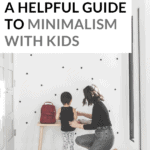
For my kids we have a day of giving at the beginning of December. We donate good toys to a local charity, and bun broken items, for every 15 toys they donate, each, they get to buy 1 toy or 2 books from the charity. We then have a food shopping race, each child is given a list of food needed for the homeless shelter, they each have a trolley, and parent, and race to see who can get all the items on the list. My kids look forward to this every year. A benefit to this is my son now looks after his toys more.
What a great post! And I don’t even have a child, nor married 🙈 I found myself interested with minimalist living after reading marie kondo and fumio sasaki’s book. This really helps adding perspective so thank you Jennifer! 😊
This quote sums up why I love your take on minimalism. “Do the things I own, buy, say, and do reflect the type of life I want to live?
If so, then my life is clutter free whether it looks like it to anyone else or not.”
Your heart is so full of grace to make minimalism a lifestyle rather than an “item count“. Life is so much more than the number of things you own -or don’t.
We have 6 children (that in itself isn’t very minimal) and the amount of “stuff” in our lives was suffocating me. Over the last year (after buying your Mindful Decluttering) I have made a huge shift in how I think about getting rid of the stuff. Although we did get rid of enough things to fill the equivalent of a large uhaul (very embarrassing to see how much we had and didn’t need/use), I have kept things that other people might look at and think, “no way are they minimalists!” We love to host and share our large yard with family, friends and neighbor kids. So we have a stack of folding chairs and tables, outdoor play things, extra bikes for others to ride when they come to play and even an extra bed for guests. I’ve struggled with feeling like I “should” get rid of these extras. But when I contemplate the joy it brings to us and our guest to have these things to share, I know it’s the right thing for us. I can’t thank you enough for your wisdom and grace when it comes to minimalism. You have helped set me free in so many ways. Bless you, sweet “friend”
Oh, this makes me so happy Cynthia! Thank you for your kind words, and for sharing your story with us. Please take care 🙂
So great to read this, Jen! I don’t have kids but your points about giftgiving especially stood out to me. Thank you for sharing and hope you’re well!
A really interesting post, thank you for your insight.
I have 2 boys, both teenagers now, and I found it frustrating that they found it difficult to tidy up even though their books and toys had specific places to live. What I realised was that my language was wrong, where I saw a mess they saw their stuff. So sfter many frustrating years I realised I needed to be really specific so “tidy up” became “can you please put your cars away in the box’ with a time scale attached. I now use this method with my husband – it works so much better!
Thank you for sharing your experience Michele! That is so helpful—as I mentioned, my children are still very young so I have a lot to learn. I’m sure this advice will come in handy down the road. Take care!
Best post I’ve read on being a minimalist with a family! Thank you 🙂
Thank you Sarah! That means a lot 🙂